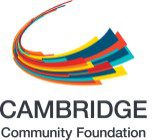Equity and Innovation Report
Chapter 3: Cambridge by Quintiles
How the city looks across five income groups
A photo collage of Cambridge residents. (Photos by Kristen Joy Emack, Jeffrey Blackwell, Sam Seidel, and Romana Vysatova; others courtesy of residents).
A photo collage of Cambridge residents. (Photos by Kristen Joy Emack, Jeffrey Blackwell, Sam Seidel, and Romana Vysatova; others courtesy of residents).
Over the past several years, the U.S. has become acutely aware of the income inequality that exists between the wealthiest 1 percent and the rest of the population. While comparing these two groups reveals a stark picture of an important trend in the nation’s social and economic life, it fails to capture the myriad real-life experiences of people and households across the income spectrum. Within the 99 percent are upper middle-class white-collar professionals, solidly middle-class couples who still struggle to pay the rent, lower-income graduate students with room to grow before hitting their full earning potential, and families with children living in extreme poverty.
Instead of dividing the population into two or three income brackets, then, this report explores a changing Cambridge through quintiles, or five equal shares of the total number of households, to better capture the diversity of the city’s approximately 118,000 residents. For a better understanding of the city’s households, the quintile data excludes students living in dormitories and others living in institutional settings. The report divides the remaining roughly 100,000 people into five groups by income, with each quintile representing about 20,000 people.
This chapter provides a profile of Cambridge’s quintiles in 2018 across a broad set of demographic, housing, and economic characteristics, and compares them to the quintiles of roughly a decade ago. In reading these profiles, it is important to note that the data do not capture the trajectories of individual people or families over the past 10 years; rather, they provide snapshots of Cambridge at distinct points in time. The goal is to understand which groups have lost and which have gained, as well as how equity in Cambridge has changed during this boom period of innovation and growth.
“Cambridge has a lot of resources for immigrants and it felt really welcoming to my family when we came here from Nepal. But going forward we can’t overlook seniors, children, and low-income people. We need to make sure Cambridge stays welcoming for everyone.”
— Abina Nepal, Nonprofit Professional
QUINTILES AT-A-GLANCE
Exploring Cambridge across five income groups. A quintile refers to one-fifth of the population.
Sources: 2005–2009 and 2014–2018 American Community Survey 5-Year Estimates.
Note: The quintiles analyze people living in households and do not include the roughly 17,000 people living in group quarters, such as dormitories, nursing homes, shelters, and other institutional settings.
We have adjusted the standard naming conventions established by the U.S. Census Bureau in the following ways: “Hispanic/Latino” ethnicity is referred to as “Latinx”; “Black” refers to “Black/African American”; “Asian” includes “Native Hawaiian/Pacific Islander”; “Multiracial” refers to “Two or More”; and “Another race/AIAN” includes “Some Other” and American Indian/Alaska Native.” For more about our terminology on race and ethnicity »





